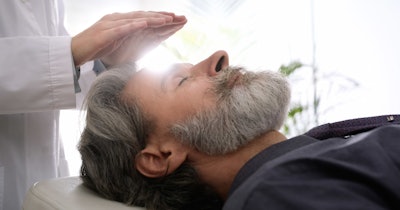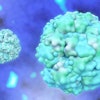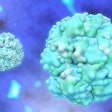
A new molecular point-of-care testing device identifies individuals for whom hypnosis may relieve postoperative pain.
The research, published earlier this year in The Journal of Molecular Diagnostics, may help reduce the use of opioids for pain management.
Hypnosis is an effective pain relief treatment for many individuals, but determining which patients will benefit can be challenging. Hypnotizability testing requires in-person evaluation by specialists, which is rarely available in clinical settings. Given that hypnotizability is a stable cognitive trait with a genetic basis, researchers sought to create a point-of-care molecular diagnostic test that would objectively identify individuals most likely to benefit from hypnosis interventions by determining treatability at the point-of-care.
Highly hypnotizable individuals are also more likely to experience high postoperative pain levels. Considering the opioid epidemic, the researchers view the development of non-pharmacological pain treatments to be an urgent matter.
Prior research has established that the genetic basis for hypnotizability includes four specific single-nucleotide polymorphisms (SNPs), or genetic variations, found in the catechol-o-methyltransferase (COMT) gene for the brain enzyme responsible for dopamine metabolism in the prefrontal cortex. The researchers developed a SNP genotyping assay on a giant magnetoresistive biosensor array to detect the optimal combination of the COMT SNPs in patient DNA extracted from blood samples.
The study investigated the association between COMT diplotypes and hypnotizability using a clinical hypnotizability scale called the Hypnotic Induction Profile (HIP). An additional exploratory study of the association between perioperative pain, COMT genotypes, and HIP scores was conducted by analyzing saliva samples from patients who had undergone total knee arthroplasty. Participants with HIP scores of 3 or higher on a scale of zero to 10 were considered treatable by hypnosis.
For participants identified with the optimal COMT diplotypes by the biosensor array, 89.5% scored high on the HIP, which identified 40.5% of the treatable population. The optimal COMT group’s mean HIP score was significantly higher than that of the suboptimal COMT group. The association between hypnotizability and COMT genotypes was found to be strongest for the females in the cohort.
In analyzing the relationship between COMT genotypes and pain after knee surgery, the same optimal COMT individuals had significantly higher postoperative pain scores than the suboptimal group, indicating a greater treatment need. This finding supports evidence that COMT genotypes impact pain, and that COMT genotypes may affect opioid use after surgery.
COMT SNPs alone are not a complete biomarker for identifying all individuals who will score highly on a hypnotizability scale and experience high pain sensitivity. While the biosensor array can accommodate up to 80 SNPs, other SNPs, such as those for dopamine receptors, may be needed to further stratify individuals.
“Precision medicine has made great strides in identifying differences in drug metabolism that can impact medication decisions for perioperative pain,” said co-lead investigator Dr. Jessie Markovits of the Stanford School of Medicine, in a statement. “We hope to provide similar precision in offering hypnosis as an effective, non-pharmacological treatment that can improve patient comfort while reducing opioid use.”



















